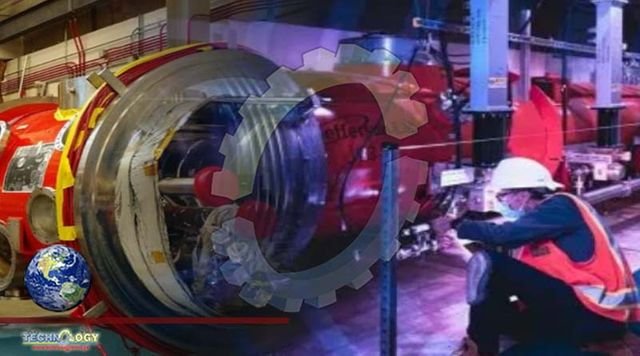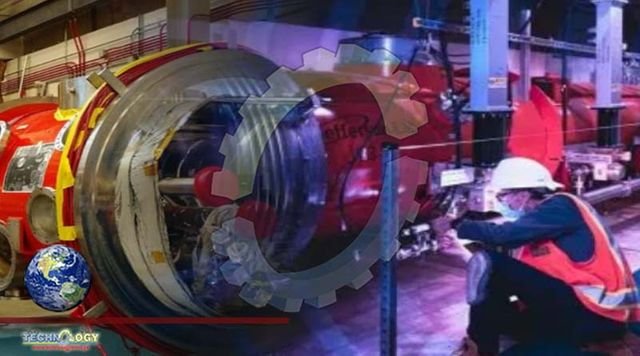Superconducting X-Ray Laser Reaches Operating Temperature Colder Than Outer Space The new facility, LCLS-II, will soon sharpen our view of how nature works on ultrasmall, ultrafast scales, impacting everything from quantum devices to clean energy.

Nestled 30 feet underground in Menlo Park, California, a half-mile-long stretch of tunnel is now colder than most of the universe. It houses a new superconducting particle accelerator, part of an upgrade project to the Linac Coherent Light Source (LCLS) X-ray free-electron laser at the Department of Energy (DOE)’s SLAC National Accelerator Laboratory.
Crews successfully cooled the accelerator to minus 456 degrees Fahrenheit – or 2 kelvins – a temperature at which it becomes superconducting and can boost electrons to high energies with nearly zero energy lost in the process. It is one of the last milestones before LCLS-II will produce X-ray pulses that are 10,000 times brighter, on average, than those of LCLS and that arrive up to a million times per second – a world record for today’s most powerful X-ray light sources
SLAC’s linac at sunrise, looking east. Since the Department of Energy’s SLAC National Accelerator Laboratory powered up its “linac” half a century ago, the 2-mile-long particle accelerator has driven a large number of successful research programs in particle physics, accelerator development, and X-ray science. Now, the historic particle highway new makeover will pave the way for more groundbreaking research. Credit: Olivier Bonin/SLAC National Accelerator Laboratory
“In just a few hours, LCLS-II will produce more X-ray pulses than the current laser has generated in its entire lifetime,” says Mike Dunne, director of LCLS. “Data that once might have taken months to collect could be produced in minutes. It will take X-ray science to the next level, paving the way for a whole new range of studies and advancing our ability to develop revolutionary technologies to address some of the most profound challenges facing our society.”
With these advanced new capabilities, scientists can examine the details of complex materials with unprecedented resolution to drive new forms of computing and communications; reveal rare and fleeting chemical events to teach us how to create more sustainable industries and clean energy technologies; investigate how biological molecules carry out life’s functions to develop new types of pharmaceuticals; and peer into the bizarre world of quantum mechanics by directly measuring the motions of individual atoms.
LCLS, the world’s first hard X-ray free-electron laser (XFEL), produced its first light in April 2009, generating X-ray pulses a billion times brighter than anything that had come before. It accelerates electrons through a copper pipe at room temperature, which limits its rate to 120 X-ray pulses per second.
In 2013, SLAC launched the LCLS-II upgrade project to boost that rate to a million pulses and make the X-ray laser thousands of times more powerful. For that to happen, crews removed part of the old copper accelerator and installed a series of 37 cryogenic accelerator modules, which house pearl-like strings of niobium metal cavities. These are surrounded by three nested layers of cooling equipment, and each successive layer lowers the temperature until it reaches nearly absolute zero – a condition at which the niobium cavities become superconducting.
Unlike the copper accelerator powering LCLS, which operates at ambient temperature, the LCLS-II superconducting accelerator operates at 2 kelvins, only about 4 degrees Fahrenheit above absolute zero, the lowest possible temperature,” said Eric Fauve, director of the Cryogenic Division at SLAC. “To reach this temperature, the linac is equipped with two world-class helium cryoplants, making SLAC one of the significant cryogenic landmarks in the U.S. and on the globe. The SLAC Cryogenics team has worked on site throughout the pandemic to install and commission the cryogenic system and cool down the accelerator in record time
Source: This news is originally published by scitechdaily
